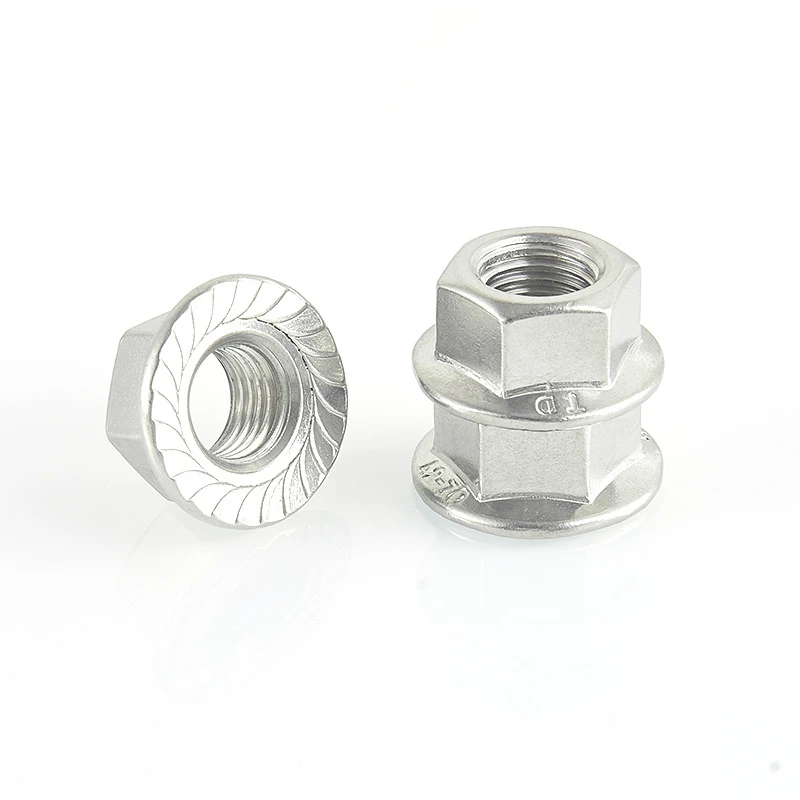

M6 Flange Nut Specifications and Applications in Mechanical Engineering
Dec . 25, 2024 04:25 Back to list
M6 Flange Nut Specifications and Applications in Mechanical Engineering
The M6 Flange Nut A Comprehensive Overview
The M6 flange nut is a critical component widely used in various engineering and construction applications. Its design and functionality make it indispensable in ensuring secure connections in assemblies. This article will explore the features, applications, advantages, and considerations surrounding the M6 flange nut.
Understanding the M6 Flange Nut
The M in M6 denotes the metric system, indicating that the nut is measured in millimeters. The 6 refers to the nominal diameter of the nut's internal thread, which is 6 mm. One of the defining features of the M6 flange nut is its integrated flange or washer-like base. This flange offers added support by distributing the load over a wider surface area, which greatly enhances the nut's performance and effectiveness.
Typically made from materials such as stainless steel, carbon steel, or nylon, M6 flange nuts are available in various finishes, including galvanized, zinc-plated, and black oxide. The choice of material and finish can be critical, as it affects the nut's resistance to corrosion, wear, and environmental factors.
Applications of M6 Flange Nuts
M6 flange nuts find applications across numerous industries. From automotive manufacturing to electrical installations, these nuts serve as reliable fastening solutions. Some common applications include
1. Automotive Industry In vehicles, M6 flange nuts secure various components, such as body panels and engine parts. Their design helps prevent loosening due to vibrations.
2. Electronics These nuts are frequently used in assembling electronic housings, securing circuit boards, and connecting hardware components.
3. Construction In building structures, M6 flange nuts are used to fasten components in steel and aluminum frames, ensuring structural integrity.
4. Machinery They are essential in machinery assembly, particularly in equipment that requires robust connections to withstand heavy loads and dynamic stresses.
5. Home Improvement DIY enthusiasts utilize M6 flange nuts when constructing furniture or performing home repairs, thanks to their ease of use and availability.
Advantages of M6 Flange Nuts
The M6 flange nut offers several advantages that contribute to its widespread use
m6 flange nut

1. Load Distribution The flange design enables improved load distribution, reducing the risk of deformation in the material being secured.
2. Reduced Risk of Loosening These nuts are less likely to loosen over time compared to standard nuts, especially in applications subject to vibration.
3. Ease of Installation The flange provides a larger contact surface, making it easier to tighten without slipping, even in confined spaces.
4. Versatility M6 flange nuts can be paired with various bolt types and lengths, making them versatile for different applications.
5. Cost-Effective Given their durability and effectiveness, M6 flange nuts provide a cost-effective solution for securing components across various industries.
Considerations When Using M6 Flange Nuts
While M6 flange nuts offer numerous benefits, some considerations should be taken into account
1. Material Selection The choice of material is crucial, as it impacts the strength and corrosion resistance of the nut in specific environments. For outdoor applications, stainless steel nuts are often preferred.
2. Torque Specifications It's essential to adhere to proper torque specifications when tightening M6 flange nuts to prevent overtightening, which can lead to stripping or damage.
3. Compatibility Ensure the M6 flange nut is compatible with the bolt type used in applications. Using mismatched components can compromise the integrity of the assembly.
4. Inspection Regular inspection of the nuts in critical applications is important to ensure they remain secure and free from wear.
Conclusion
In conclusion, the M6 flange nut is a vital fastening component that combines functionality with ease of use. Its ability to distribute load, reduce loosening risks, and offer versatility makes it a popular choice across various industries. By understanding its properties and applications, individuals and professionals alike can make informed decisions about its use in their projects. As industries continue to evolve, the M6 flange nut will undoubtedly remain a staple in the realm of mechanical fastening solutions.
Latest news
-
High-Strength Hot-Dip Galvanized Bolts-Hebei Longze|Corrosion Resistance&High Strength
NewsJul.30,2025
-
Hot Dip Galvanized Bolts-Hebei Longze|Corrosion Resistance&High Strength
NewsJul.30,2025
-
Hot Dip Galvanized Bolts - Hebei Longze | Corrosion Resistance, High Strength
NewsJul.30,2025
-
High-Strength Hot Dip Galvanized Bolts-Hebei Longze|Corrosion Resistance, Grade 8.8
NewsJul.30,2025
-
Hot Dip Galvanized Bolts-Hebei Longze|Corrosion Resistance,High Strength
NewsJul.29,2025
-
High-Strength Hot Dip Galvanized Bolts - Hebei Longze Metal Products Manufacturing Co., Ltd.|corrosion resistance&high strength
NewsJul.29,2025

